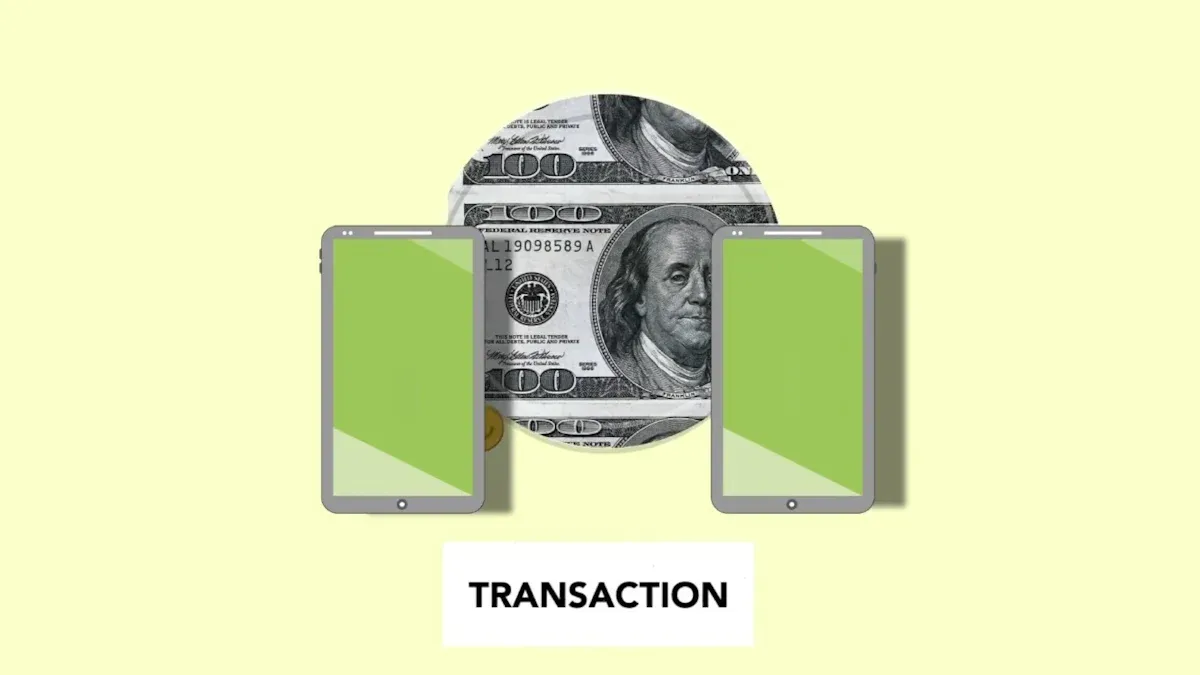- EasyCard
- Trade
- Help
- Announcement
- Academy
- SWIFT Code
- Iban Number
- Referral
- Customer Service
- Blog
- Creator
The Best Ways to Transfer Money from the UK to the US: A Comprehensive Analysis of Fees, Security, and Remittance Techniques

Image Source: pexels
Are you looking for the best way to transfer money from the UK to the US via remittance? For most people, the answer is straightforward. Online remittance platforms (e.g., Wise, Revolut) typically outperform traditional banks in terms of fees and speed.
Traditional bank transfer processes can be slow and expensive. In contrast, modern online services offer more transparent and efficient options.
Key Points
- Online remittance platforms are the best choice. They offer low fees, fast delivery, and fair exchange rates.
- When choosing a transfer method, consider total fees, speed, and security. Total fees include handling fees and exchange rate margins.
- When transferring, carefully verify the recipient’s information, especially the bank account number and ACH routing number.
- Avoid transferring on weekends and holidays, as this can slow down delivery.
- For large transfers, consider traditional banks or professional forex brokers.
Core Factors for Evaluating Transfer Methods
When selecting the best transfer method, you need to examine three key clues like a detective: total fees, speed, and security. Ignoring any of these could lead to unnecessary costs or risks.
1. Total Fees: Handling Fees and Exchange Rates
The transfer fees you see are not the full cost. Total fees consist of multiple components, some of which are hidden.
- Fixed Fees: A set amount per transaction, e.g., $5. This can be uneconomical for small transfers.
- Percentage Fees: Charged as a percentage of the transfer amount. The larger the amount, the higher the fee.
- Hidden Fees: These are often the biggest cost trap, mainly in exchange rate markups.
Providers’ exchange rates are rarely the true “mid-market rate.”
The mid-market rate is the real exchange rate used by banks and large financial institutions for currency transactions. It is determined by the average of the buy and sell prices, and you can find it on Google or financial websites like Reuters.
When a platform offers a rate worse than the mid-market rate, the difference is their profit and your hidden cost.
2. Transfer Speed: Instant Delivery vs. Waiting Time
How long does it take for your funds to reach the US? Different methods vary greatly in speed. Online platforms typically complete transfers within minutes to hours, especially during business days. In contrast, traditional bank wire transfers may take 3-5 business days to arrive.
Transfer speed is also affected by your payment method. Paying with a debit card is usually faster than a bank transfer but may incur slightly higher fees.
3. Security and Compliance: Importance of FCA Regulation
Fund security is paramount in transfers. In the UK, you should choose services regulated by the Financial Conduct Authority (FCA). The FCA provides critical protections, requiring companies to:
- Clearly display all fees before you confirm the transaction.
- Proactively inform you of potential intermediary bank fees.
- Ensure fee information is easily accessible without requiring effort to find.
Before choosing a service, verify its credentials on the FCA’s website by checking the company name or registration number to ensure it is listed as an “Authorized Payment Institution (API) or Electronic Money Institution (EMI).” This simple step provides strong assurance for your funds’ safety.
Finding the Best Way to Transfer from the UK to the US

Image Source: pexels
Now that you understand the core factors for evaluating transfer services, let’s compare several mainstream methods in detail. Each method has unique strengths and weaknesses, helping you find the most suitable option.
1. Online Remittance Platforms
For most personal transfer needs, online platforms (e.g., Wise, Revolut) are the top choice. They disrupt traditional models, prioritizing low fees and speed as core advantages.
Their biggest appeal lies in transparent fee structures and highly competitive exchange rates. They typically use or are very close to the mid-market rate and clearly list fixed fees for each transaction.
Wise promises no hidden exchange rate markups, using only the mid-market rate. This ensures you get fairer value for your transfers.
For example, when transferring 1,000 GBP from the UK to the US via Wise, the fee structure is clear, and you know exactly how much USD the recipient will receive.
- Truly Transparent Pricing: The platform informs you of all fees before confirming the transaction.
- Fair Exchange Rates: They typically use the real rate you can find on Google.
- Fast Delivery: According to Evidence 5, many transfers complete within minutes to hours, far faster than traditional banks.
While these platforms are excellent, you should note some limitations. For instance, Wise imposes limits on single transfers depending on the payment method.
However, for the vast majority of regular personal transfers (e.g., tuition, living expenses, or family support), these limits are usually more than sufficient. Thus, online platforms are one of the best ways to transfer money from the UK to the US.
2. Traditional Bank Wire Transfers
Using your UK bank (e.g., HSBC, Barclays) for international wire transfers is the most traditional method. Its main advantage is the familiarity and trust you have in your bank. However, this trust often comes with high costs and slow delivery.
Bank fees typically include two parts:
- Transfer Handling Fee: Even for online transactions, banks may charge a fixed fee. For example, according to Evidence 2, HSBC UK’s international transfer fees can range from £4 to £10, or higher.
- Exchange Rate Markup: This is the biggest hidden cost. Banks’ rates are typically 1%-3% worse than the mid-market rate, meaning you could lose £10-£30 per 1,000 GBP transferred.
Interestingly, some banks advertise “fee-free” transfers. For example, according to Evidence 3, Barclays doesn’t charge upfront fees for online international payments but may impose a £3 “USD coverage fee”, and their rates still include a profit markup.
In terms of speed, bank wire transfers typically take 3-5 business days, unsuitable for urgent needs.
3. PayPal and Other Payment Apps
PayPal is renowned for its convenience, especially if both you and the recipient have accounts, making transfers simple. However, this convenience comes with high costs.
PayPal’s international transfer fees typically include:
- Fixed Fee: A small fixed amount per transaction.
- Currency Conversion Fee: The primary cost, PayPal’s exchange rate markup is often higher than online platforms and banks.
- Percentage Fee: Charged as a percentage of the transfer amount.
Overall, PayPal is better suited for small, non-urgent peer-to-peer transfers rather than large international remittances. For larger amounts, its fees quickly become uneconomical.
4. Comparison Summary of Methods
To help you choose more intuitively, we’ve compiled a comparison table. You can select the best way to transfer from the UK to the US based on your needs (amount, speed, cost).
| Method | Total Fees | Speed | Security | Best Use Case |
|---|---|---|---|---|
| Online Platforms (Wise, Revolut) | Low and transparent, using mid-market rates | Very fast, minutes to 1 business day | High, strictly regulated by FCA | Almost all personal transfer scenarios, especially small to medium transfers under $10,000. |
| Traditional Bank Wire Transfers | High, including fees and hidden rate markups | Slow, 3-5 business days | Very high, trusted banking system | Very large transfers (over $100,000) or when specific bank operations are required. |
| PayPal | Very high, especially for large transfers | Fast, usually within 24 hours | High, mature payment network | Convenient small payments when both parties have PayPal accounts and don’t mind high rates. |
This table clearly shows that for most people, online remittance platforms strike the best balance between cost, speed, and security, making them the best way.
Step-by-Step Guide to Online Transfers

Image Source: pexels
Using an online platform like Wise to transfer money from the UK to the US is straightforward. Follow these steps to complete your transfer easily.
Step 1: Register and Verify Identity
First, create a free account on your chosen online remittance platform (e.g., Wise). This typically takes just a few minutes. To comply with financial regulations and ensure fund security, the platform will require identity verification. You may need to upload ID documents (e.g., passport) and proof of address.
Step 2: Create a Transfer Task
After logging into your account, start creating a transfer task. The process is intuitive:
- Enter the GBP amount you wish to send.
- The platform will instantly show the USD amount the recipient will receive, along with all fees and the exchange rate used.
- Confirm the amount is correct and proceed.
Step 3: Enter US Recipient Information
In this step, accurately enter the US recipient’s bank account details. This typically includes:
- Recipient’s full name
- Recipient’s address
- Bank account number
- Routing number
Important Note: Choosing the Correct Routing Number The US banking system uses two main routing numbers: ACH routing number and wire transfer routing number. For most regular transfers via online platforms, use the ACH routing number. It’s designed for electronic transfers and is more cost-effective.
The table below clarifies their differences:
| Feature | ACH Transfer | Wire Transfer |
|---|---|---|
| Transaction Type | Routine transactions (e.g., bill payments, living expenses) | High-value, time-sensitive transactions |
| Cost | Typically low or free | Higher, usually $25-$50 |
| Speed | 1-3 business days | Usually same-day |
| Best Choice | Most personal online transfers | Urgent or very large transfers |
The recipient can find the correct ACH routing number on their bank statement, online banking, or the bottom left of their checkbook.
Step 4: Choose Payment Method and Pay
Next, select how to fund your transfer. Common options include:
- Debit Card: One of the fastest methods. The platform can instantly confirm payment and start processing the transfer, though fees may be slightly higher than bank transfers.
- Bank Transfer: Typically the lowest-cost option. You need to manually transfer funds from your bank account to the platform’s designated account.
Choose based on your preference for speed and cost.
Step 5: Track Transfer Progress
After completing payment, you’re done! Reputable online platforms provide real-time transfer tracking. You can monitor the status on the website or app, from “Received” to “Processing” to “Delivered,” ensuring full transparency and peace of mind.
Money-Saving and Security Tips for Transfers
Mastering a few transfer tips can save you significant fees and ensure fund security. These four practical tips are worth reviewing before each transfer.
Tip 1: Use Rate Lock Features
The forex market is volatile, and even small rate fluctuations can impact your final received amount. Some online platforms offer a “rate lock” feature, a powerful money-saving tool.
When creating a transfer, the platform locks the current exchange rate, typically valid for a few hours. As long as your funds reach the platform’s account within that time, the transaction uses the locked rate. This is especially useful during periods of rate instability.
Note: This feature provides certainty, not speculation. Frequently creating and canceling transfers to chase better rates may lead to the platform restricting your access to this feature per their user agreement.
Tip 2: Take Advantage of First Transfer Promotions
Many transfer services offer attractive first-transfer promotions to attract new customers. These may include:
- Waived fees for the first transaction.
- Better exchange rates for the first transfer.
Before signing up for a new platform, check for such offers. This is an excellent opportunity to minimize costs on your first transfer.
Tip 3: Avoid Weekends and Holidays
To ensure funds arrive quickly, initiate transfers on a morning when both the UK and US are in business hours. This avoids delays due to time differences or holidays.
Tip 4: Double-Check Recipient Information
This is the most critical step for fund security. Entering incorrect recipient details can lead to serious consequences, such as:
- Funds sent to the wrong account, with recovery being very difficult.
- Transfers rejected due to mismatched names or account numbers.
- Funds stuck in limbo, causing lengthy delays.
Before clicking “Send,” verify the full name, bank account number, and routing number with the recipient. This one-minute check can save days of hassle and potential financial loss.
Choosing the best transfer method is clear. For small to medium transfers under $10,000, regulated online platforms are the best way.
They offer low transparent fees, real market exchange rates, and reliable security, making transfers both cost-effective and secure.
For larger transfers, consult professional forex brokers for personalized services and competitive rates. Also, remind your US recipient that if their total foreign account balance exceeds $10,000 at any point in the year, they may need to file FinCEN Form 114 (FBAR). We hope this article helps you make the most informed decision based on your situation.
FAQ
Are there limits on transferring money from the UK to the US?
Yes, transfer methods dictate limits. Online platforms (e.g., Wise) have caps per transaction, e.g., $2,000 for debit card payments. Bank wire transfers typically have no explicit limit, but large transfers may require additional documentation.
What information do I need to transfer money to the US?
You need the recipient’s full name, full US address, bank account number, and ACH routing number. For smooth transfers, ensure you use the ACH routing number for regular electronic transfers.
Do I need to report taxes for transferring money to the US?
As the sender, you typically don’t need to report taxes in the US. However, US recipients may need to report to the IRS if they receive overseas gifts exceeding certain thresholds (e.g., $100,000 annually).
What’s the best method for transfers over $100,000?
For transfers exceeding $100,000, consider traditional bank wire transfers or consult professional forex brokers. These channels are designed for large transactions, offering competitive rates and tailored services.
*This article is provided for general information purposes and does not constitute legal, tax or other professional advice from BiyaPay or its subsidiaries and its affiliates, and it is not intended as a substitute for obtaining advice from a financial advisor or any other professional.
We make no representations, warranties or warranties, express or implied, as to the accuracy, completeness or timeliness of the contents of this publication.




Contact Us
Company and Team
BiyaPay Products
Customer Services
is a broker-dealer registered with the U.S. Securities and Exchange Commission (SEC) (No.: 802-127417), member of the Financial Industry Regulatory Authority (FINRA) (CRD: 325027), member of the Securities Investor Protection Corporation (SIPC), and regulated by FINRA and SEC.
registered with the US Financial Crimes Enforcement Network (FinCEN), as a Money Services Business (MSB), registration number: 31000218637349, and regulated by FinCEN.
registered as Financial Service Provider (FSP number: FSP1007221) in New Zealand, and is a member of the Financial Dispute Resolution Scheme, a New Zealand independent dispute resolution service provider.




















